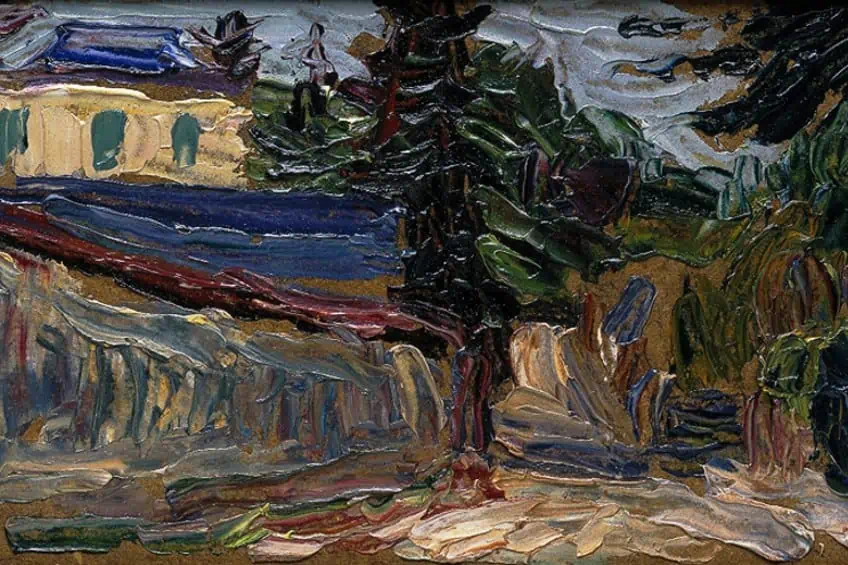Famous German Artists – Top German Painters and Their Works
Although Germany has only been a unified state since the 19th century, German painters have a long and illustrious history in the visual arts. The Renaissance, which was characterized by increased interest in classical Greco-Roman culture, began in the 14th century in Italy and expanded outward toward Germany by the next century, leading to the rise of many famous German artists. Expressionism German paintings from the early 20th century would play an important part in defining the modern art world.
Famous German Artists
Albrecht Dürer is often recognized as the best German Renaissance artist. Romanticism emerged in the late 18th century as a response to Classicism, and Caspar David Friedrich is often recognized as the movement’s most prominent German painter.
Expressionism emerged in Germany around the turn of the century and played a significant influence in establishing the modern art world.
The German expressionists, led by Emil Nolde and Franz Marc, had a significant role in defining the movement. Germany continues to affect the modern art landscape, with artists such as Gerhard Richter and Anselm Kiefer regarded as among the world’s finest. Learn more about Germany’s rich history through this list of the 13 most famous German artists.
Albrecht Dürer (1471 – 1528)
| Date of Birth | 21 May 1471 |
| Date of Death | 6 April 1528 |
| Place of Birth | Nuremberg, Germany |
| Notable Artworks | ● Self-Portrait at Twenty-Eight Years Old Wearing a Coat with Fur Collar (1500) ● Praying Hands (1508) ● Melencolia (1514) |
Albrecht Dürer was a talented draftsman and painter, but printing was his biggest artistic contribution. He started his career as an assistant to Michael Wolgemut, who had a big studio and was a pioneer among the artists who were resurrecting German woodcut traditions at the time. Dürer’s high-quality woodcut works helped him establish his fame and impact across Europe when he was still in his 20s.
He went on to innovate printing, bringing it to the status of a separate art form, and is acknowledged as one of the most influential artists in printmaking history.

Dürer maintained contact with renowned Italian painters of the time, including Da Vinci and Raphael. His incorporation of classical elements into Northern art contributed significantly to the German Renaissance. Albrecht Dürer is often recognized as the best German Renaissance artist.
He had a major impact on artists of subsequent generations, particularly in printing.
Hans Holbein the Younger (1497 – 1543)
| Date of Birth | c. 1497 |
| Date of Death | c. 1543 |
| Place of Birth | Augsburg, Germany |
| Notable Artworks | ● The Ambassadors (1533) ● The Body of the Dead Christ in the Tomb (1537) ● Portrait of Henry VIII (1537) |
The Northern Renaissance was the era of transformation that took place north of the Alps in Europe. The German painters were an important element of the Northern Renaissance, and Hans Holbein was a key figure in this period. He came from a prominent artistic family. Hans Holbein the Elder, his father, was a well-known Late Gothic artist.
Hans Holbein the Younger’s career began with religious works and murals. His work was well-regarded from the start of his career.

He painted several portraits of North European nobility and dignitaries and served as King Henry VIII of England’s King’s royal painter. Hans Holbein is widely regarded as one of the best 16th-century portraitists, and some of his works have become iconic images. His religious works and portraits, for example, are distinguished by their captivating realism and have been produced with uncommon accuracy.
Hans Holbein is regarded as one the greatest and most famous German artists of his period.
Caspar David Friedrich (1774 – 1840)
| Date of Birth | 5 September 1774 |
| Date of Death | 7 May 1840 |
| Place of Birth | Greifswald, Germany |
| Notable Artworks | ● Monk by the Sea (1810) ● Wanderer above the Sea of Fog (1818) ● The Sea of Ice (1824) |
Caspar David Friedrich established a strong reputation early in his career. Nevertheless, his reputation deteriorated in his final years as reviewers who did not comprehend his work criticized it harshly. He died impoverished and unknown, and it wasn’t until the mid-20th century that he won favor with a younger generation of reviewers and scholars.
Nowadays, Friedrich is regarded as one of the most famous German artists of the Romanticism movement, an art style that emphasized passion and individualism as well as the exaltation of nature and the past.
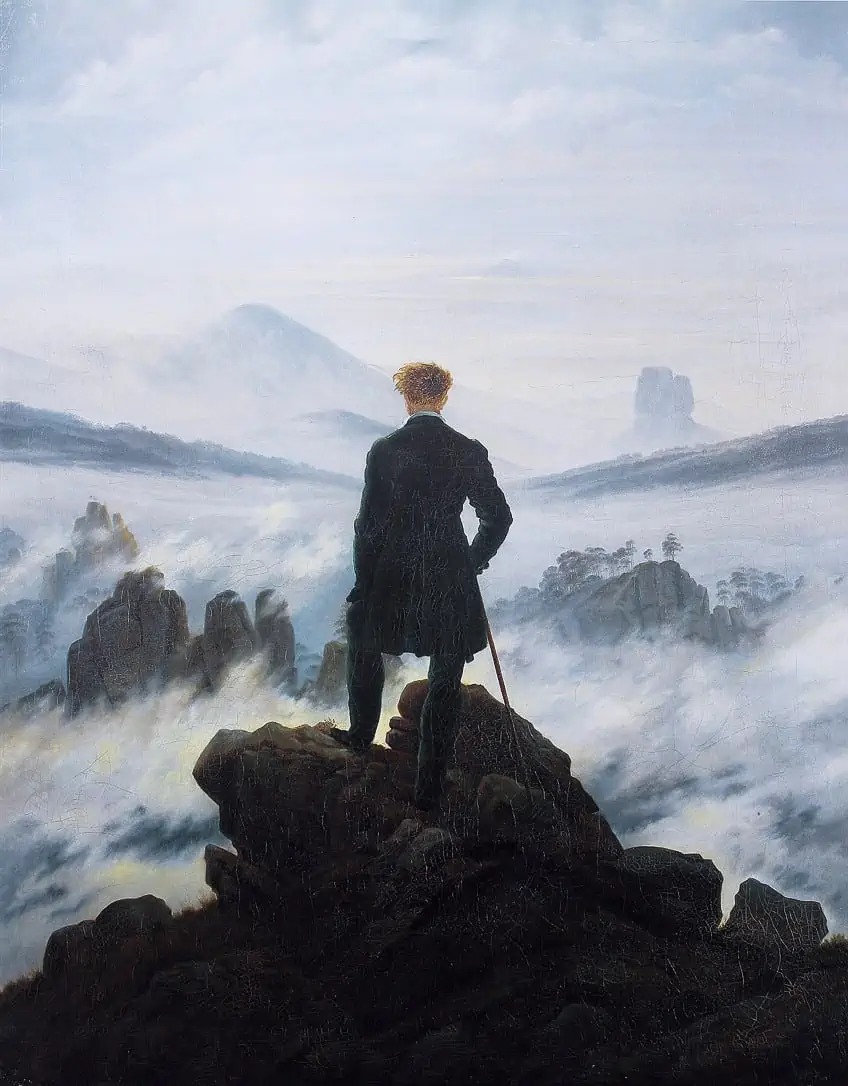
Friedrich is seen as a complicated psychological person, “a celebrator of beauty plagued by gloom”. He is most renowned for paintings that depict humans under the night sky, early mists, bare trees, and other settings, portraying man’s lost power on a broader scale of life. Friedrich imbued landscape painting with profound theological and spiritual importance.
He is regarded as one of the genre’s most prominent artists.
Max Liebermann (1847 – 1835)
| Date of Birth | 20 July 1847 |
| Date of Death | 8 February 1835 |
| Place of Birth | Berlin, Germany |
| Notable Artworks | ● Bathing Boys (1900) ● Two Riders on the Beach (1901) ● Rider on the Beach (1904) |
Co-founder of the French Barbizon School, Jean-Francois Millet, was a major inspiration and advisor to Liebermann. Thus, he accepted the naturalist artistic rules that pervade his early works of rural farm life and the trials of physical “workhouse” labor. Nonetheless, Liebermann was able to convert his content into something more intimate without glorifying his characters. Liebermann abandoned his early Realism commitment instead of a more natural, impressionist style.
He set himself the task of bringing fresh vigor to the subjects of urban recreation and leisure among Berlin’s bourgeois classes.
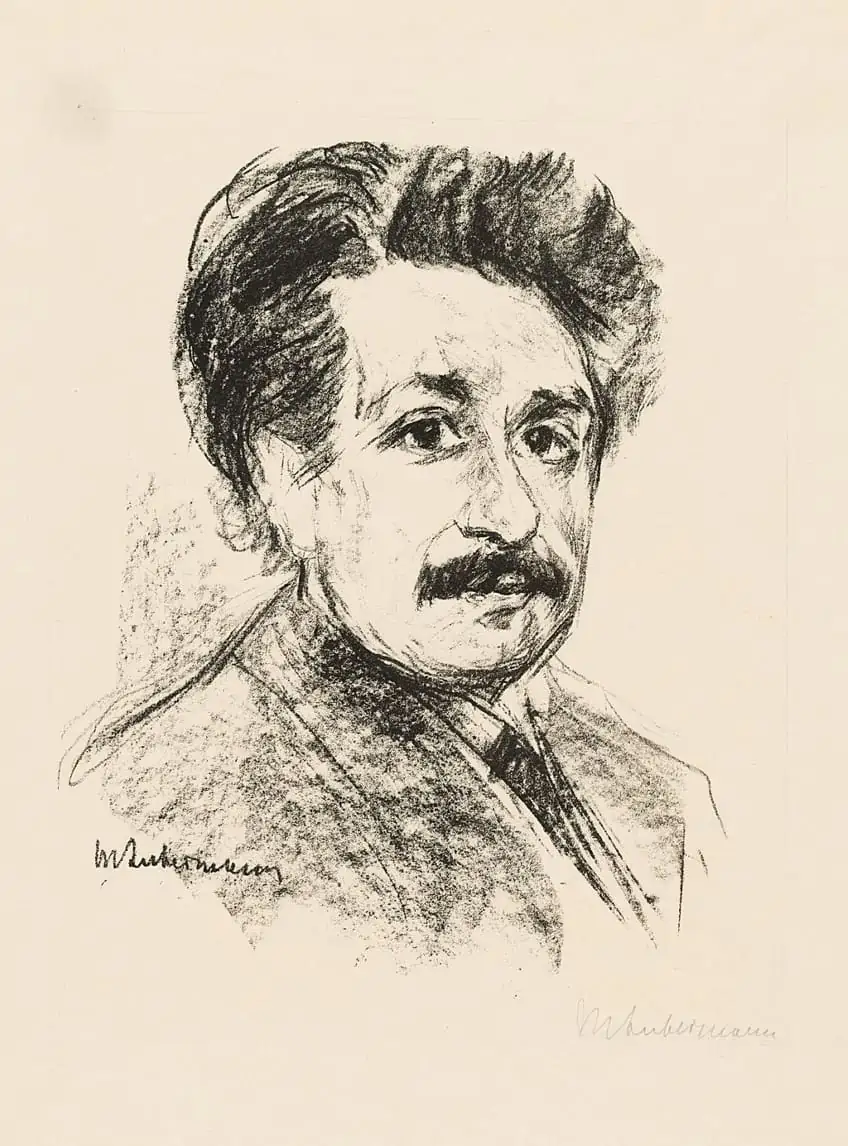
To express what was known freshly, he used a more diversified color pallet, which he applied with less polished brush strokes. Liebermann’s preference for spacious areas was a recurring theme in his later work. Liebermann, on the other hand, liked to accentuate his landscapes with impromptu observational, or “anecdotal”, features and motion.
This narrative quality in Liebermann’s works has led to comparisons to Adolph Menzel, who was noted for his strong sense of observation and ability to capture the spirit of daily German life.
Other than his narrative-style works, Liebermann is less widely known as a portrait artist, even though he took over 200 commissions from notable individuals in business, science, and politics throughout his career. His most notable sitters included Paul Von Hindenburg, the ex-president, and Albert Einstein, the famous physicist.
Emil Nolde (1867 – 1956)
| Date of Birth | 7 August 1867 |
| Date of Death | 13 April 1956 |
| Place of Birth | Nolde, Province of Schleswig-Holstein, Kingdom of Prussia, German Empire |
| Notable Artworks | ● Lesende Junge Frau (1906) ● Blumengarten (Ohne Figur) (1908) ● Blumengarten (Utenwarf) (1917) |
Expressionism was a German art movement that is recognized as one of the most significant art styles of the 20th century. Its German painters employed disfigured shapes and bright colors to communicate intense experiences instead of reality. Die Brücke was a group of German painters who had a significant influence on Expressionism and the development of modern art.
The most well-known member of this prominent group is Emil Nolde.
Among several other aspects, Nolde revived religious themes, revitalized the fading medium of printing, and was among the first 20th-century artists to investigate color in depth. Emil Nolde is considered one of the most prominent Expressionist contributions, particularly for his rendering of religious themes in a fresh, bright style.
Above all, his art serves as a link between Germany’s distant aesthetic history and its more radical future, which helped establish him as one of the most famous German painters.
Paula Modersohn-Becker (1876 – 1907)
| Date of Birth | 8 February 1876 |
| Date of Death | 31 November 1907 |
| Place of Birth | Dresden, Germany |
| Notable Artworks | ● Mother and Child Reclining (1906) ● Self-Portrait at 6th Wedding Anniversary (1906) ● Self Portrait (1907) |
Paula Modersohn-Becker painted still lifes, landscapes, and household settings, but portraits of girls and women captivated her artistic imagination the most. She depicted moms nuzzling and breastfeeding their newborns, lone farm girls inspecting the countryside, and elderly folks enthroned on rockers. She also painted self-portraits in a variety of styles. Modersohn-Becker rejected traditional beauty with her somber, rustic palette and thick impasto textures, prompting one museum director, an early supporter of her works, to remark, “She lacks practically everything that is required to capture hearts and satisfy the casual look”.
Modersohn-Becker defied expectations in more ways than one.
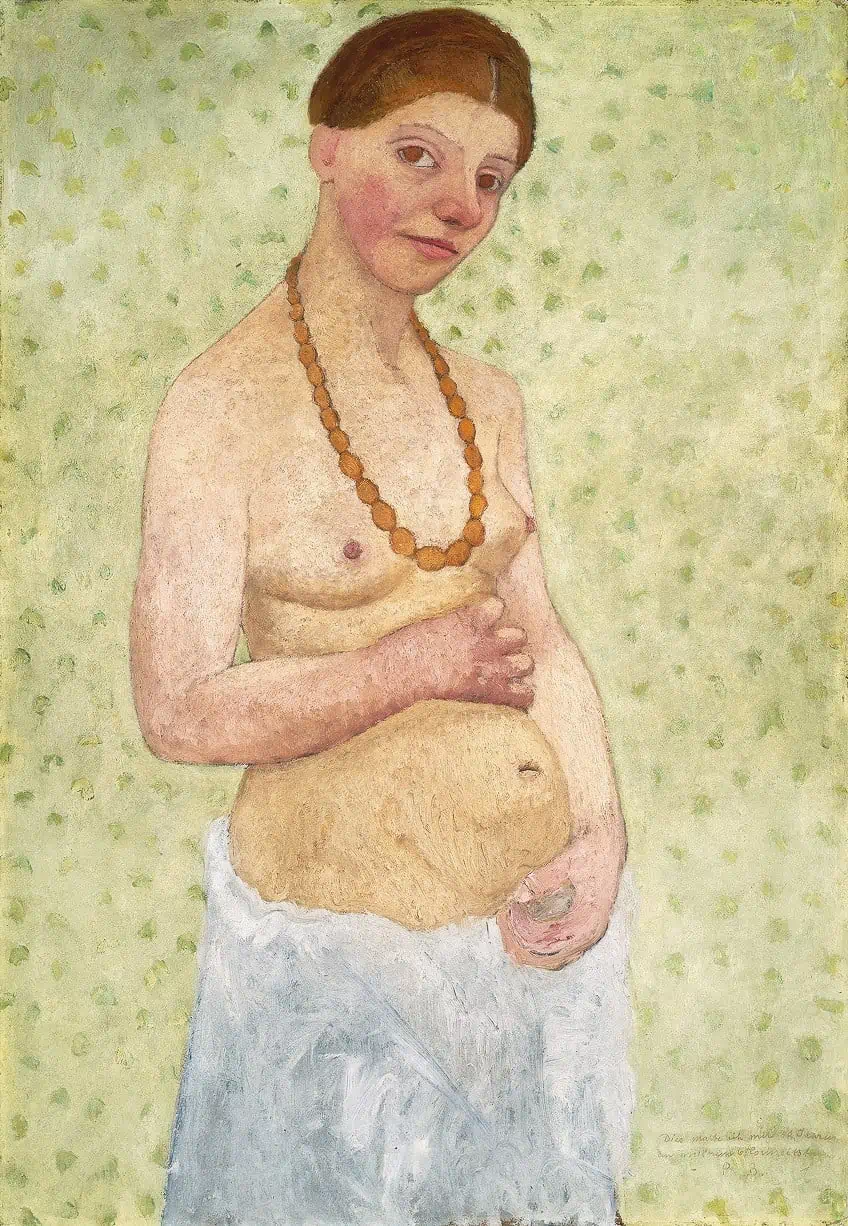
She worked extensively as a painter during a period when women were supposed to be husbands and parents first, and she portrayed other women in a manner that challenged traditional notions of femininity. Her feminine figures, whose robust bodies are sometimes placed uncomfortably, make no concessions to the observer, eschewing any trace of idealization.
Their dark, saucer-shaped eyes appear to conceal rather than disclose their inner life.
Gabriele Münter (1877 – 1962)
| Date of Birth | 19 February 1877 |
| Date of Death | 19 May 1962 |
| Place of Birth | Berlin, Germany |
| Notable Artworks | ● Jawlensky and Werefkin (1908) ● Breakfast and the Birds (1934) ● Stafelsee (1934) |
Even though Münter’s name is intimately tied with her former lover and colleague Wassily Kandinsky, few would argue that her contributions to the canons of 20th-century modernism ought to be honored on its own merits. She is most known as a painter and printer, and she is often considered in terms of German Expressionism and as a member of the infamous Blaue Reiter group.
She made colorful abstract and figurative works marked by intense color and free brushstrokes, influenced by non-western art and folk art, and recognized for her intuitive approach to her canvases.
Through their journeys around North Africa and Europe, Münter and Kandinsky discovered new artistic possibilities. Münter, for her part, began to create Post-Impressionistic landscapes with the thick and bright streaks of paint that would eventually become her signature.
Münter, on the other hand, stood out among her colleagues for the pace with which she worked, frequently completing one or more big canvasses in a single day.
In 1909, after returning to Germany, Münter and Kandinsky established the New Artists’ Association Munich. Motivated by her connections with her newly expanded peer group, Münter progressed towards abstraction, creating landscapes and still lives composed of blocks of basic unmodulated hues and flat perspectives.
Paul Klee (1879 – 1940)
| Date of Birth | 18 December 1879 |
| Date of Death | 29 June 1940 |
| Place of Birth | Münchenbuchsee, Switzerland |
| Notable Artworks | ● Senecio (1922) ● Castle and Sun (1928) ● Cat and Bird (1928) |
Paul Klee was a prolific artist who created over 9000 pieces of art in his lifetime. In 1933, he made about 500 pieces, and over 1200 artworks in 1939. His paintings have been linked to a variety of art groups, including Cubism, Expressionism, Abstraction, and Surrealism, although they are difficult to categorize.
Klee’s style was very unique, and he is often regarded as the most innovative artist of the 20th century. He reinterpreted art trends in his own unique way, employing novel ideas and techniques.

He worked in a variety of mediums, and at times integrated them into a single piece. The influence of his musical passion may be noticed in his works, which also display his shifting moods and caustic humor. Klee researched color theory and had written extensively about it. He is now known as the “Newton of Color”.
Paul Klee was one of the most recognized German painters as well as one of the most important artists in contemporary art worldwide.
Franz Marc (1880 – 1916)
| Date of Birth | 8 February 1880 |
| Date of Death | 4 March 1916 |
| Place of Birth | Munich, Germany |
| Notable Artworks | ● Blue Horses (1911) ● Yellow Cow (1911) ● The Foxes (1913) |
Der Blaue Reiter, along with Die Brücke, was one of the two schools of German artists that were crucial to Expressionism. The group specialized in abstract artwork and was founded on the belief that color and shape held tangible spiritual meanings. Franz Marc, together with Russian artist Wassily Kandinsky, was the leading character of Der Blaue Reiter.
He is well known for his pictures of vibrantly colored animals, particularly horses, which he utilized to express profound themes about people, the natural environment, and humankind’s fate.
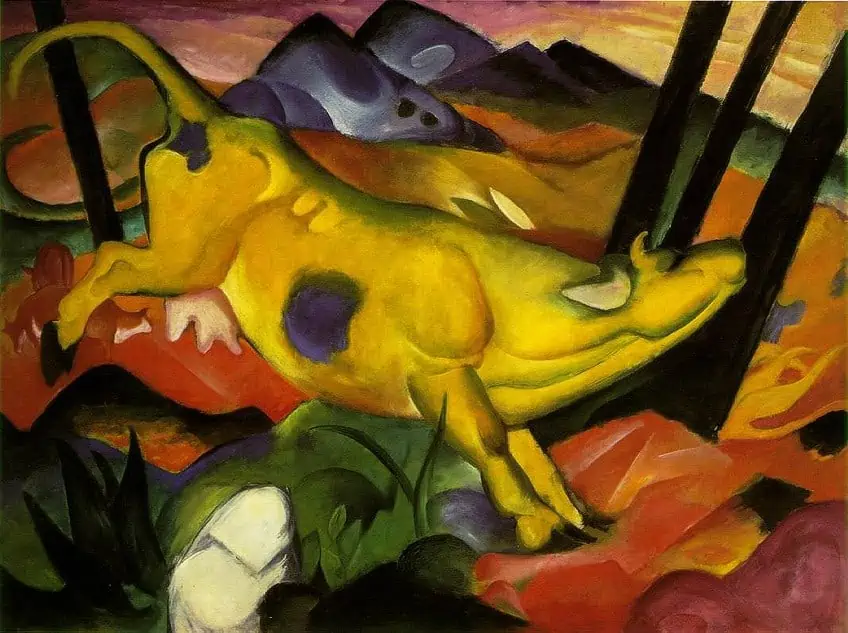
Animals and nature were holy to him, and he depicted them with devotion. His paintings are distinguished by vibrant and brilliant primary colors, austere simplicity, and intense emotions. Even though he died at the age of 36, Franz Marc had a huge effect on Expressionism and is considered one of the movement’s most recognized painters.
Otto Dix (1891 – 1969)
| Date of Birth | 2 December 1891 |
| Date of Death | 25 July 1969 |
| Place of Birth | Untermhaus, Germany |
| Notable Artworks | ● Pragerstrasse (1920) ● Portrait of the Journalist Sylvia von Harden (1926) ● The War (1932) |
Neue Sachlichkeit was a German art movement that emerged in response to Expressionism, which characterized the art of the western world at the time. It eschewed the expressionists’ introspective sentimentality and passionate longings, preferring seeking clarity and definition via “matter-of-fact” analysis of tangible reality.
Wilhelm Heinrich Otto Dix, alongside George Grosz, is often regarded as the most prominent artist of the Neue Sachlichkeit movement.
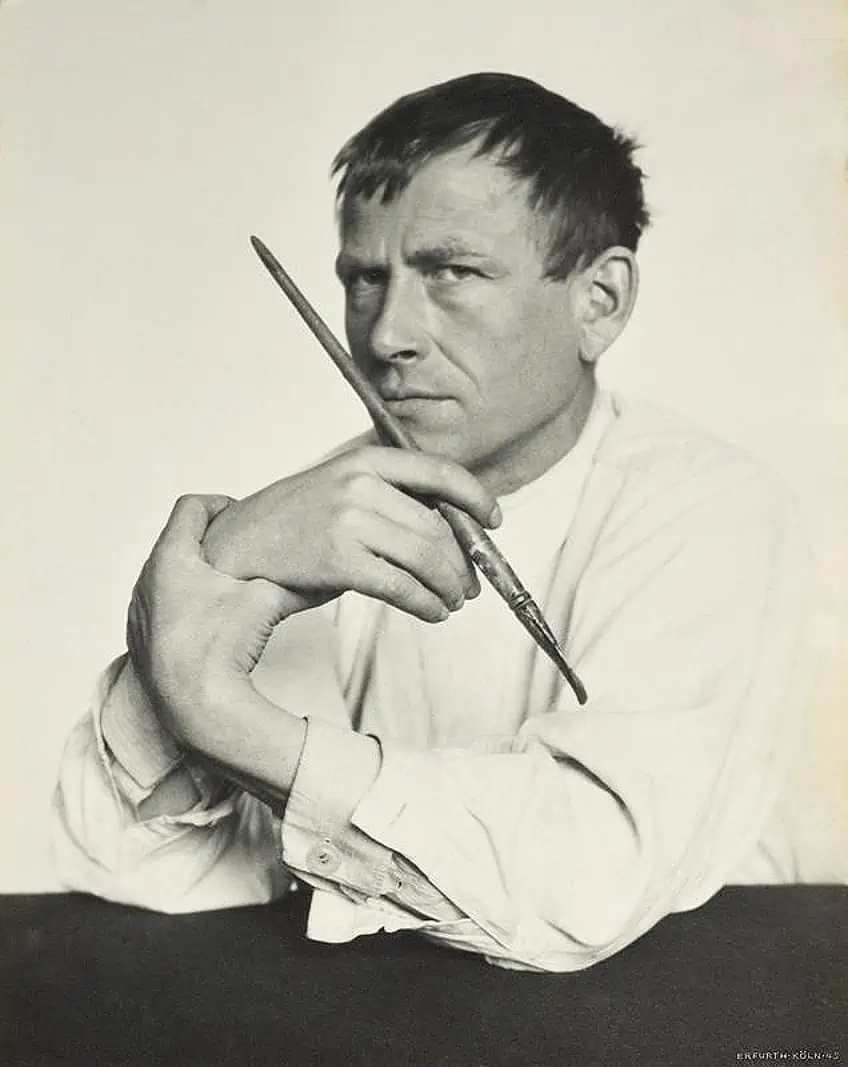
His paintings and sketches reflect and harshly critique Germany’s corruption, frenetic thrill-seeking, and overall demoralization after its defeat in World War I, as well as the ineffective Weimar Republic that lasted until 1933. Otto Dix is well-known for his merciless and painfully realistic representations of the human condition, which can be seen as cruel mockery.
He is regarded as one of the most renowned German painters of the 20th century.
Max Ernst (1891 – 1976)
| Date of Birth | 2 April 1891 |
| Date of Death | 1 April 1976 |
| Place of Birth | Brühl, Germany |
| Notable Artworks | ● The Elephant Celebes (1921) ● Ubu Imperator (1923) ● Forest and Dove (1927) |
Surrealism was a 20th-century art movement whose practitioners eschewed logic and realism in favor of accessing the unconscious mind to reveal the potential of the mind. Max Ernst was a founding member of both the Dada movement and Surrealism. Ernst’s creation of Surrealist methods grattage and frottage is one of his most important contributions.
In frottage, the creator rubs a pencil, pastel, or other drawing instruments across an uneven surface.

The drawing can be kept as is or utilized as a starting point for further modification. Grattage is the process of placing a canvas prepared with an oil paint layer over a rough item and then scratching the paint off to produce an intriguing and surprising surface.
Max Ernst, together with René Magritte, Joan Miro, and Salvador Dalí, is credited with establishing the golden period of Surrealism.
Gerhard Richter (1932 – Present)
| Date of Birth | 9 February 1932 |
| Date of Death | N/A |
| Place of Birth | Dresden, Germany |
| Notable Artworks | ● 48 Portraits (1972) ● Abstraktes Bild 599 (1986) ● Lesende (1994) |
Gerhard Richter has produced a diverse body of work. He has created photorealistic and abstract sculptures, paintings, drawings, photography, and glassworks. Richter, like Picasso, has not established a single unified style, and his works, while related to various art trends, cannot be classified into a single genre. Richter begins his “photo-paintings” by projecting an image onto his canvas.
He paints to recreate the appearance of the original painting before applying his signature “blur”.
Richter’s abstract paintings are composed of successive layers of non-representational paintwork. He starts by brushing large swathes of primary color across the canvas. The paintings proceed in phases, based on his reactions to the picture’s evolution: accidental details and emerging patterns.
Gerhard Richter’s art has earned both popular and critical recognition.
Anselm Kiefer (1945 – Present)
| Date of Birth | 8 March 1945 |
| Date of Death | N/A |
| Place of Birth | Donaueschingen, Germany |
| Notable Artworks | ● Heroic Symbols (1969) ● Breaking the Vessels (1990) ● Bohemia Lies by the Sea (1996) |
Anselm Kiefer is well known for enormous canvases that depict German history, particularly the atrocities of the Holocaust. These works encouraged his peers to confront the issue at a time when acknowledging Nazism was frowned upon. Kiefer used thick impasto, a painting technique in which paint is applied in thin layers so that the brushwork is apparent.
In his work, he used unusual materials such as ash, straw, lead, clay, and shellac. Many of them make reference to various parts of German and foreign mythology and history.
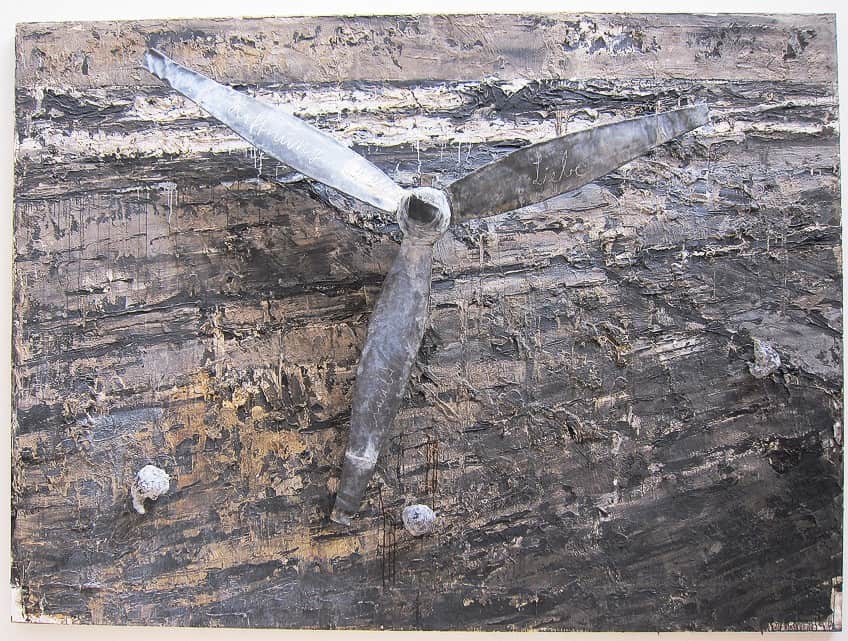
Text from poetry, books, and nationalist slogans are also used in his works. Kiefer’s whole career has been defined by his courage in addressing taboos and contentious subjects from recent history. Anselm Kiefer received the Order of Merit of the Federal Republic of Germany in 2005. He is still regarded as one of the most famous German artists of the modern era.
Germany has played an important part in numerous art periods, helping to shape many of them. As a result, there are numerous famous German artists. German paintings have been created through the centuries that have not only met international standards, but often, exceeded them, and German painters are as highly regarded and respected as many of the most well-known artists from across the world.
Take a look at our german artists webstory here!
Frequently Asked Questions
What Style Do German Painters Paint In?
Throughout the ages, various German painters have produced art in a wide range of styles. Albrecht Dürer is frequently acknowledged as the finest German Renaissance artist. Romanticism originated in the late 18th century as a reaction to Classicism, and Caspar David Friedrich is typically acknowledged as the movement’s most notable German painter. Around the turn of the century, Germany experienced the emergence of expressionism, which had a major impact on the development of the contemporary art world. The German expressionists, led by Emil Nolde and Franz Marc, played a crucial influence in defining the movement. German painters like Gerhard Richter and Anselm Kiefer, who are recognized as some of the best in the world, continue to have an impact on the landscape of contemporary art.
What Are the Characteristics of German Artworks?
There is no definitive style that can encompass all the art produced in Germany. Therefore, there is no list of characteristics that define German paintings overall. As with artists from around the world, German paintings can be created in a variety of styles and mediums. There are a few styles that emerged from Germany, such as Der Blaue Reiter and Die Brücke.
Jordan Anthony is a Cape Town-based film photographer, curator, and arts writer. She holds a Bachelor of Art in Fine Arts from the University of the Witwatersrand, Johannesburg, where she explored themes like healing, identity, dreams, and intuitive creation in her Contemporary art practice. Jordan has collaborated with various local art institutions, including the KZNSA Gallery in Durban, the Turbine Art Fair, and the Wits Art Museum. Her photography focuses on abstract color manipulations, portraiture, candid shots, and urban landscapes. She’s intrigued by philosophy, memory, and esotericism, drawing inspiration from Surrealism, Fluxus, and ancient civilizations, as well as childhood influences and found objects. Jordan is working for artfilemagazine since 2022 and writes blog posts about art history and photography.
Learn more about Jordan Anthony and about us.
Cite this Article
Jordan, Anthony, “Famous German Artists – Top German Painters and Their Works.” artfilemagazine – Your Online Art Source. November 24, 2022. URL: https://artfilemagazine.com/famous-german-artists/
Anthony, J. (2022, 24 November). Famous German Artists – Top German Painters and Their Works. artfilemagazine – Your Online Art Source. https://artfilemagazine.com/famous-german-artists/
Anthony, Jordan. “Famous German Artists – Top German Painters and Their Works.” artfilemagazine – Your Online Art Source, November 24, 2022. https://artfilemagazine.com/famous-german-artists/.


